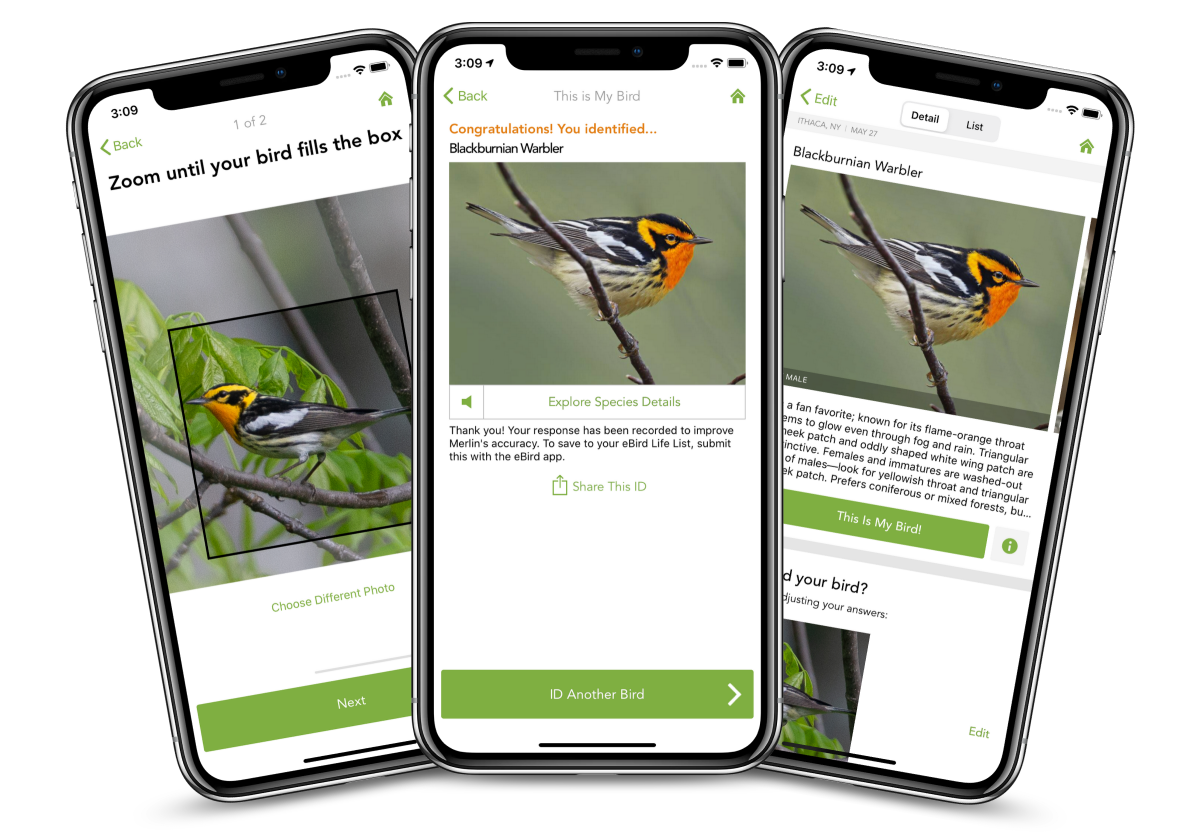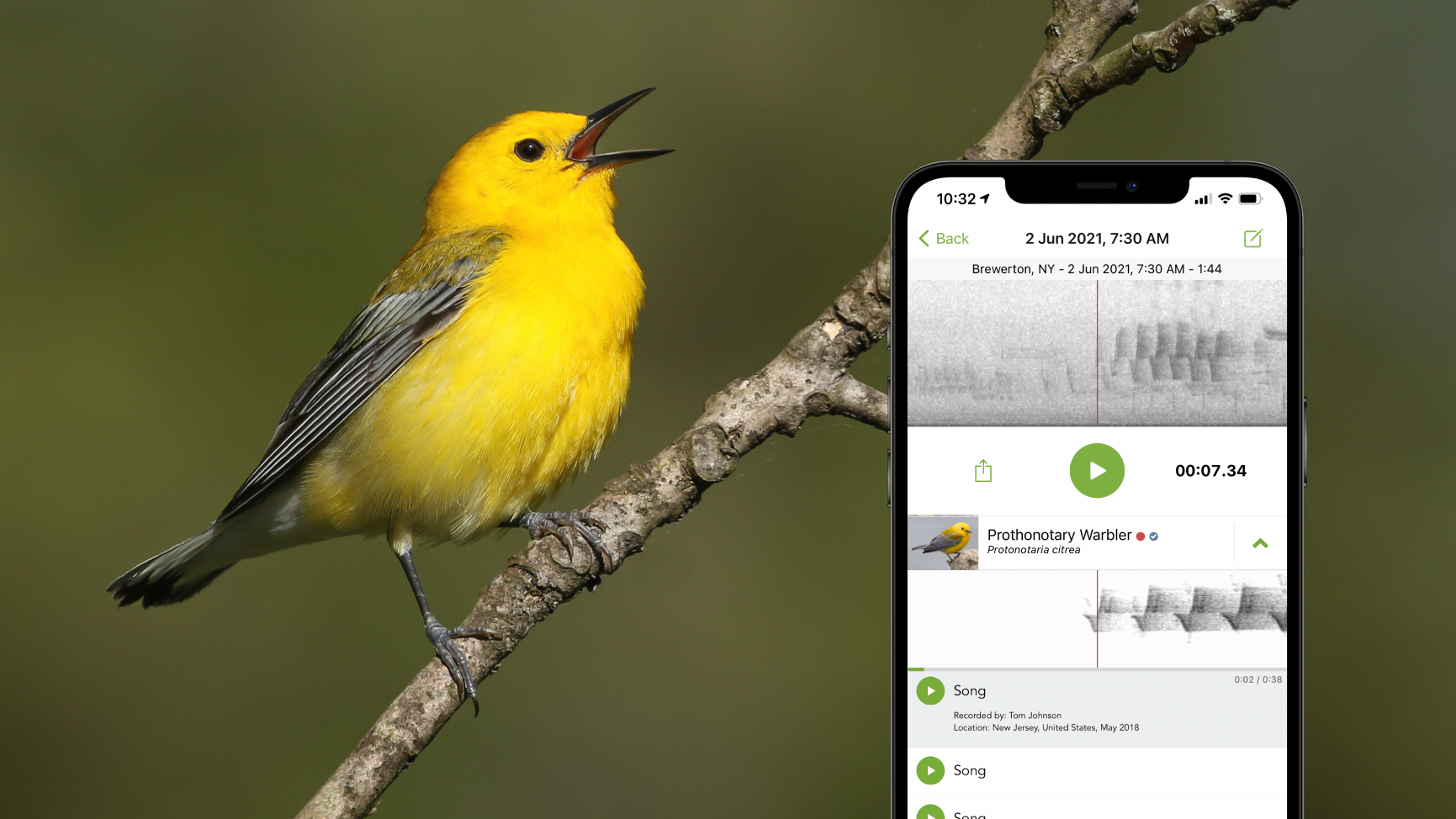In this blog, we’ll explore what the app does, why it’s useful, how to use it (especially in India), as well as its limitations. By the end you’ll know whether it’s worth having on your phone the next time you step into a garden, forest or park.
What is Merlin Bird ID?
Merlin is more than just a field guide: it's an interactive bird‐identification tool. According to its official description:

-
You can answer a few simple questions about a bird you saw, or upload a photo of the bird. (Google Play)
-
It can listen to bird songs or calls and give suggestions (via the “Sound ID” feature). (merlin.allaboutbirds.org)

-
It gives you region‑specific bird lists, photos, sounds and maps, based on your location and date. (Google Play)
-
It is free to download and use. (Help Center)
In short: you see a bird or hear one — you open Merlin, use one of the tools (photo / sound / questions) and it gives you a likely identification + details about the species.
Who made it & how it works
The app is developed by the Cornell Lab of Ornithology, an institution well‑known for bird research, conservation and citizen‑science. (Wikipedia)
Key technology and data behind Merlin
-
The app uses data from eBird, which is a massive database of bird sightings submitted by bird‑watchers from around the world. (Google Play)
-
For photo identification, Merlin uses a machine‑learning (computer vision) model trained on millions of photos so it can suggest species from your uploaded image. (Birds, Cornell Lab of Ornithology)
-
For sound identification, it listens to recordings (live or recorded) and suggests birds based on their call. This works offline in many cases. (merlin.allaboutbirds.org)

This combination of community data + smart algorithms is what makes Merlin more than just a static bird book.
Key Features of Merlin Bird ID
Here are some of the most useful features that make it stand out:
1. Easy “Question Wizard”
If you don’t have a photo or recording, you can answer a few simple questions: e.g., where you are, size of bird, colour, behaviour. Merlin then gives likely matches. (merlin.allaboutbirds.org)
2. Photo ID
If you have a clear photo (or take one), you upload it (or pick from camera roll) and Merlin suggests possible species based on that image. (Google Play)
3. Sound ID
Hold your phone in a bird‑rich environment (or record later) and Merlin listens and shows which species it thinks it’s hearing. Works offline in many regions. (merlin.allaboutbirds.org)
4. Offline Region‑Specific Bird Packs
You can download “bird packs” for your region (e.g., India, Europe, Australia) so you have all relevant species, photos, sounds available offline. (Google Play)
5. Life List & Personal Records
You can save your sightings (bird you identified) to a personal list (“This is my bird!”) and keep track of what you’ve seen. (merlin.allaboutbirds.org)
6. Range Maps, Photos & Sounds
For each species, Merlin offers a photo gallery, sound recordings of calls and songs, and a map showing where the bird lives or migrates. (Google Play)
Why It’s Useful — Especially in India
For someone in India (or anywhere really), here’s why Merlin can be helpful:
-
India has a rich bird diversity, and many birds seen in gardens, forests or even cities may be unfamiliar. Merlin gives a quick way to identify them.
-
Offline packs mean when you go to remote nature spots with weak internet you can still identify birds.
-
Sound ID opens up an entirely new dimension: sometimes you hear a bird but cannot see it — Merlin helps bridge that gap.
-
It’s great for beginners: you don’t need to memorise hundreds of species; instead you get guided help.
-
Helps build awareness & appreciation: once you identify a bird, you’ll likely learn more about it (habitat, call, behaviour) which deepens the bird‑watching experience.
How to Use Merlin Bird ID — Step by Step
Here’s a simple guide you can follow to use the app effectively.
Step 1: Install & Set Region
-
Go to Google Play (Android) or App Store (iOS) and install “Merlin Bird ID by Cornell Lab”. (App Store)
-
On first run, choose your region (e.g., India) so the app knows which birds are likely in your area.
Step 2: Download Bird Pack for Your Region
-
Within the app, download the bird pack for your area so you have offline access to birds’ photos & sounds.
-
Note: If you’re headed to a remote location, download before you leave so you have full offline access.
Step 3: Identify a Bird
You have three main ways:
A) Photo:
-
Take a photo of the bird (or choose one from your gallery).
-
Merlin will analyse the image and suggest possible species.
-
Tap on a suggestion to see more details: photos, sounds, map, ID tips.
B) Sound:
-
In bird‑rich spots, open Sound ID, press “Start”, hold your phone quietly while birds are singing.
-
Merlin displays names of species it hears.
-
Tap on a name to explore more about that bird.
C) Question Wizard:
-
If you neither have a photo nor can use Sound ID, answer simple questions: location, habitat (garden/forest), size, colour, behaviour.
-
Merlin gives likely matches based on your answers.
Step 4: Save Your Sighting
-
If you are confident about the identification, tap “This is my bird!” to record it in your life list.
-
Optionally, you can sync with eBird if you want. (Help Center)
Step 5: Explore & Learn
-
Browse through species lists, listen to calls, learn about migration, etc.
-
The more you explore, the better your bird‑watching skills will become.
Pros and Cons — What to Know
👍 Pros
-
Free, high‑quality app from a trusted institution.
-
Works offline (if you prep the packs) — good for field use.
-
Combines photo + sound + question‑based ID — multiple modes.
-
Helps both beginners and seasoned birders.
-
Supports India and many regions globally.
👎 Cons / Limitations
-
In very remote areas with fewer bird observations, accuracy may drop. As the FAQ cautions: If your area has very few sightings recorded in eBird, Merlin may not suggest certain species. (Help Center)
-
For sound ID: background noise, multiple overlapping calls, or very shy/faint birds may challenge the recognition.
-
Photo ID: if the image is blurry, partially hidden bird, or lighting is poor, suggestions may be off.
-
The app might not yet cover all bird species worldwide in full detail — though the coverage is rapidly increasing. (Birds, Cornell Lab of Ornithology)
Tips to Get the Most Out of the App
-
Download the region pack before you head into the field.
-
For Sound ID: try to stay still and quiet for a minute or two, so the app can “listen” properly.
-
For Photo ID: take a clear, well‑lit image of the bird, ideally showing colour, beak and posture.
-
Use the life‑list feature: recording your sightings helps you track your progress and encourages you to revisit places.
-
Submit your sightings (via eBird) if possible: your data helps improve the app. (Help Center)
-
Try it in your everyday settings: garden, park, or balcony — you’ll be surprised how many birds you start noticing.
-
Use the “Explore” section to familiarise yourself with common species in your region — so you build some baseline knowledge.
Use Case: Bird Watching in India
If you are in Bhopal, Madhya Pradesh (or any other location in India) and want to use Merlin:
-
Select India region (or nearest region available).
-
Download the bird pack for India / South Asia.
-
Visit local parks, lakesides, forests. You may spot birds like kingfishers, bulbuls, warblers, raptors.
-
Use Sound ID near dawn or dusk when birds are vocal.
-
For gardens or school trips, you can use the question wizard to teach children about birds and how to observe them.
-
Over time you’ll build a list of birds you’ve seen in your region, compare with friends and keep learning.
Why It Matters: Conservation & Awareness
This app is not only fun but meaningful:
-
By identifying birds you help yourself see nature more clearly — often we ignore what is right in front of our eyes.
-
Your sightings (if submitted via eBird) contribute to real science: understanding bird distributions, migration, changes in habitat. (Help Center)
-
As we build awareness of birdlife, we also build support for conservation: knowing and caring about what lives in our environment.
-
For India and other biodiverse countries, tools like Merlin help bridge the gap between expert‑birders and everyone else.
Final Thoughts
If I were to summarise: The Merlin Bird ID app is an excellent companion for anyone curious about birds — from garden watchers to forest explorers. It makes bird identification accessible, fun, and educational.
For you, whether you’re a hobbyist or want to use it for educational purposes (e.g., school, nature trips, programming a bird‑observation project), this app offers a strong set of tools in simple, usable form.